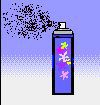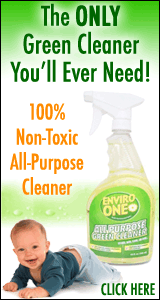 Air Fresheners (or "Air Poisoners"?) – YOU Decide!!
Air Fresheners (or "Air Poisoners"?) – YOU Decide!!
All of the advertisements strive to make us feel that we do not have a really nice home unless "air fresheners" are supplied in all bathrooms, kitchens, and around the house generally to assure that we and our visitors are persuaded that ours is not just a clean home, but one with requisite elegant touches. There are two kinds—the spray type, with their unrecycleable aerosol cans or plastic packages, adding to unnecessary solid waste, and the wick type, that send out their fumes continuously.
These products do not, in fact, do anything to improve the quality of the air. Instead, they add a number of pollutants—some designed to deaden your sense of smell, others serving as propellants, and others adding various kinds of toxic perfume to drown out whatever smells may offend. Many of these ingredients cause irritation of the nose and lungs—leading to serious problems for many people. Many times, pesticides are even included—for what purpose?! Spray this around and solve all your odor problems?!
A prominent constituent of many of these products is formaldehyde. That can destroy your sense of smell alright, and it is one of the worst offenders for respiratory irritation. It has also been admitted by the EPA to be a cause of cancer. Anyone with asthma, lung infections, or like ailments can be severely affected by formaldehyde.
The list of ingredients that may be found in these deodorants is given as follows taken from Clinical Toxicology of Commercial Products, by Gosselin, Smith and Hodge, 1984.
Spray Type Deodorizers:
- ethyl or isopropyl alcohol
- glycol ethers
- surfactant (quaternary ammonium salts)
- perfume
- water
- propellants
- metazene (4.0%)
- petroleum distillates (6.0%)
- aluminum chlorhydrol
- bromsalicylanilide 2,3,4,5-BIS(2-butylene) tetrahydrofural
- cellosolve acetate
- dichlorodifluoromethanol
- ethanol
- fatty esters
- lauryl methacrylate
- methoxychlor
- methylene chloride
- o-phenylphenol
- p-dichlorobenzene
- pine oil (toxicity like turpentine)
- piperonyl butoxide
- pyrethrin
- synthetic surfactants
- trichloromonofluoromethane
- wax
- zinc phenolsulfonate
Wick Type Deodorizers:
- formaldehyde (37%)
- water-soluble perfume
- coloring
- water
- emulsifiers
- essential oils
- aromatic chemicals (xylene)
- chlorophyll
Several of these components are well-known carcinogens, and others have a wide range of immediate and long-term toxic effects on vital organs. What the total effect is of whatever mix occurs in a particular product is unknown, even to the producers. Several terms are too general to give us any idea of the actual contents. Enough are seriously toxic to give urgent warning against exposing your family, guests, or pets to the hazards.
What's the alternative? Simply keeping the house or office clean and well-ventilated and using an exhaust fan, if needed, solves most problems. Remove the cause of the offending smell—whether by drying and cleaning off mold, removing rotting food or other material, and emptying the trash regularly. Baking soda absorbs odors in the refrigerator and elsewhere. Growing plants can help or simmering spices briefly. Also, you can simmer 4 lemons (cut in fourths) on the stove for about 45 minutes to an hour to obtain a wonderful lemon fragrance that is nontoxic.
In a recent sad case a firm hired to vacuum the heating ducts in a house finished off with a heavy spray of "freshener" into the air ducts. The family became very ill and have had to move to another home.
In summary, I believe we need to realize that "clean" does not have a "scent"!! We have all been brainwashed to believe that "clean" means some kind of toxic fragrance—whether it be our air, clothes, or body. But "clean" really has a very "neutral" smell—non-offensive and nontoxic! If you really want to freshen the air… OPEN SOME WINDOWS!! That's where you'll find truly fresh air. How arrogant of we humans to think we could improve upon God's fresh air by creating a chemical concoction in a can!










